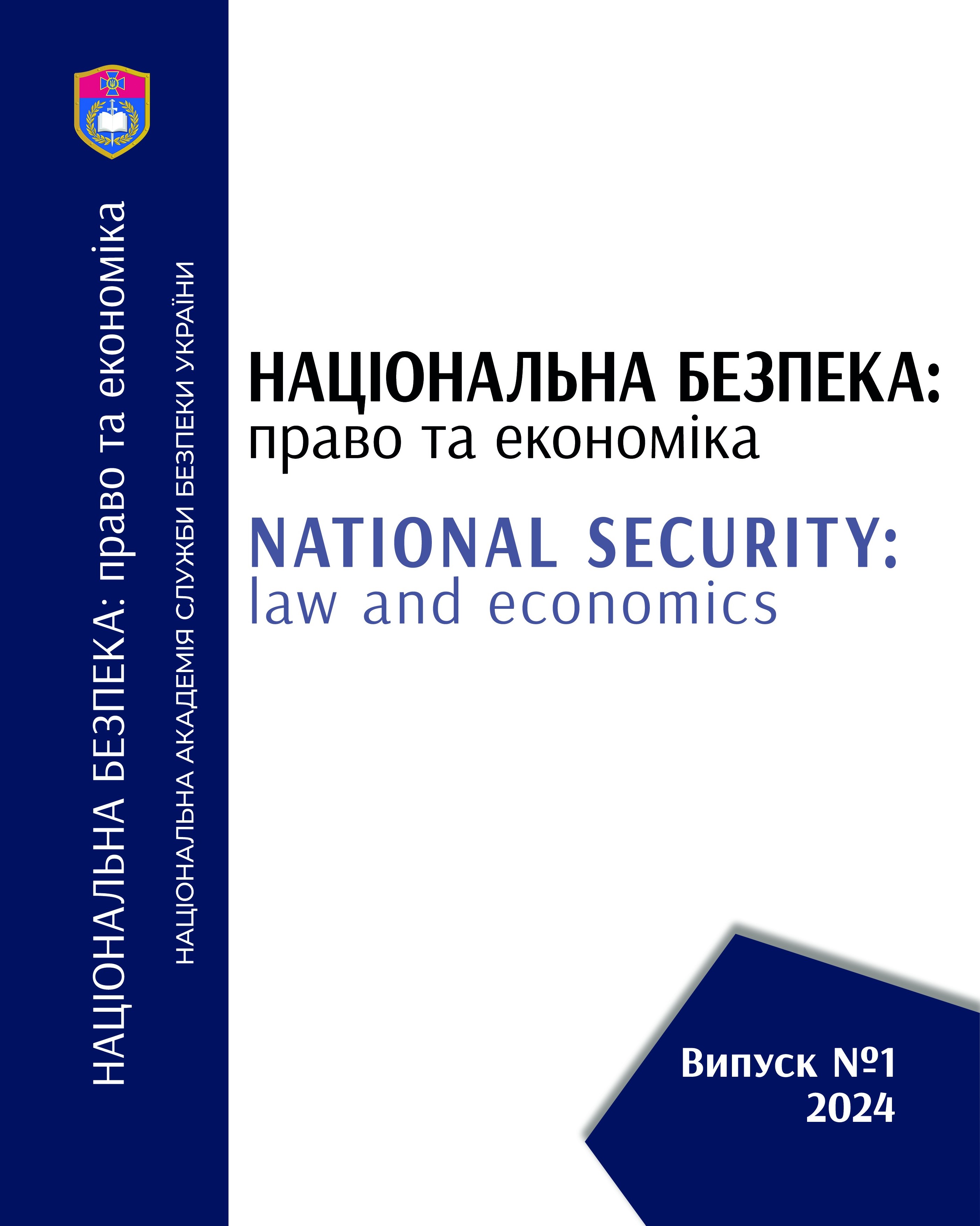Published 12/29/2024
Keywords
- international market,
- military-industrial complex expenditures,
- innovative technologies,
- international projects

This work is licensed under a Creative Commons Attribution 4.0 International License.
Abstract
The article presents the results of a study of the development of the international arms market in the twenty-first century. The theoretical and methodological basis for the study is the work of domestic and foreign scholars in the chosen field using the methods of theoretical generalization, synthesis, induction and deduction, and comparative analysis. It is proved that in the context of the Russian-Ukrainian war, attention is growing to changes in the international arms market and to identifying possible areas for strengthening the position of domestic enterprises in it in order to maximize the economic and security effect for the country. It is substantiated that states produce weapons primarily for defense purposes, but the specific forms and volumes of arms production are rather a matter of economics. It identifies the key features of the international arms market in the twenty-first century, namely the high level of transnationalization, the existence of the problem of latency of data on the real scale of production and trade, etc. The authors analyze the dynamics of spending on the military-industrial complex and identify the countries with the largest shares of investment in the development of the military-industrial complex. In Ukraine, from 2021 to 2022, the budget item for defense increased almost 10 times, and military spending amounted to 34% of GDP in 2022 compared to 3.2% in 2021. It is substantiated that the security challenges faced by Ukraine have intensified various types of interaction in the public-private sector of the defense industry, both within the country and through international partnerships within the framework of technical assistance projects. It is concluded that the transformation of the domestic military-industrial complex since the beginning of Russia's full-scale invasion of Ukraine has been carried out at an accelerated pace using the tools and technologies of the Fourth Industrial Revolution. And these processes potentially increase the competitiveness of Ukrainian military-industrial products in the international market. However, it is possible to formulate strategies for the introduction of innovative domestically produced weapons only after resolving the issue of increasing the country's defense capability in the fight against the aggressor state.
References
- Ковальчук К. В., Матюшенко І. Ю. Світовий ринок озброєнь: перспективи для України. Проблеми економіки. 2011. № 1. С. 32–40.
- Коляда О. В., Тригуб С. Е. Місце України на світовому ринку військово-технологічної продукції. Фінансовий простір. 2018. № 1. С. 59–66.
- Кім, Т., Кім, О., & Рахматіллаєва, К. Сучасні тенденції світового ринку озброєнь та перспективи розв’язання глобальної проблеми миру і демілітаризації. Економіка та суспільство, 2022, (40). URL: https://economyandsociety.in.ua/index.php/journal/article/view/1472/1418 (дата звернення: 12.11.2024).
- Ботвінов, Р., Бережнюк, І., & Богородицька, Г. Сучасний стан світової торгівлі зброєю. Економіка та суспільство, 2023, (50). https://doi.org/10.32782/2524-0072/2023-50-26.
- Гонак І. М. Дослідження особливостей економічного суперництва на світових ринках зброї: світ і Україна. Подільський вісник: сільське господарство, техніка, економіка. 2017. № 27. С. 247–254.
- Krugman, P. American Way of Economic War: Is Washington Overusing Its Most Powerful Weapons?. Foreign Aff., 2023, 103, 150. URL: https://heinonline.org/HOL/LandingPage?handle=hein.journals/fora103&div=15&id=&page= (дата звернення: 12.11.2024).
- Бажора, О. О. Формування державної політики у сфері військово-технічного співробітництва: міжнародний та державно-правові аспекти. Експерт: парадигми юридичних наук і державного управління, 2021, (1 (13)), 146-160.
- Zhuravka F., Botvinov R, Parshyna M., Makarenko T, Nebaba N. Ukraine’s integration into the world arms market. Innovative Marketing, 2021, 17(4), 146-158. http://dx.doi.org/10.21511/im.17(4).2021.13.
- Schmitt, O., & Sudreau, L. B. Alliance politics and national arms industries: creating incentives for small states? European Security. 2024. https://doi.org/10.1080/09662839.2024.2304294
- Tan, A. T. Global Arms Trade. In Security Studies, 2023 (pp. 535-551). Routledge. URL: https://www.taylorfrancis.com/chapters/edit/10.4324/9781003247821-37/global-arms-trade-andrew-tan (дата звернення: 12.11.2024).
- Schilde, K. Weaponising Europe? Rule-makers and rule-takers in the EU regulatory security state. Journal of European Public Policy, 2023, 30(7), 1255-1280. https://doi.org/10.1080/13501763.2023.2174582.
- Wang, X. Y., Chen, B., & Song, Y. (2023). Dynamic change of international arms trade network structure and its influence mechanism. International Journal of Emerging Markets. https://doi.org/10.1108/IJOEM-07-2022-1058.
- Dunne, J.P., García-Alonso, M.D.C., Levine, P., Smith, R.P. Concentration in the international arms industry. University of the West of England Discussion Paper, 2023, No. 03/01.
- Dunne, P., García-Alonso, M.D.C., Levine, P., Smith, R.P. Military procurement, industry structure and regional conflict. Discussion Paper 0502, 2005, University of Kent.
- Levine, P., Smith, R. P. The arms trade and arms control. The Economic Journal, 1995, 105, 471–484.
- Levine, P., Smith, R. P. The arms trade. Economic Policy, 1997, 337–370. October.
- Tian, N., Lopes da Silva, D., Béraud-Sudreau, L., Liang, X., Scarazzato, L., & Assis, A. Developments in Military Expenditure and the Effects of the War in Ukraine. Defence and Peace Economics, 34(5), 2023, 547-562. https://doi.org/10.1080/10242694.2023.2221877.
- The SIPRI Military Expenditure Data-base URL: https://milex.sipri.org/sipri (дата звернення: 12.11.2024).
- BRAVE1. Офіційний сайт. URL: https://brave1.gov.ua/ (дата звернення: 12.11.2024).
- MIL-TECH. Офіційний сайт URL: https://mil-tech.gov.ua/about-accelerator (дата звернення: 12.11.2024).



